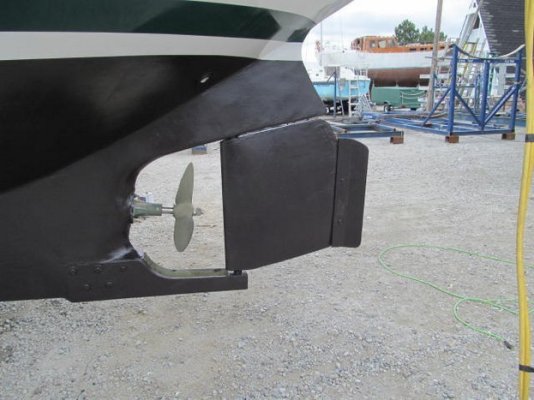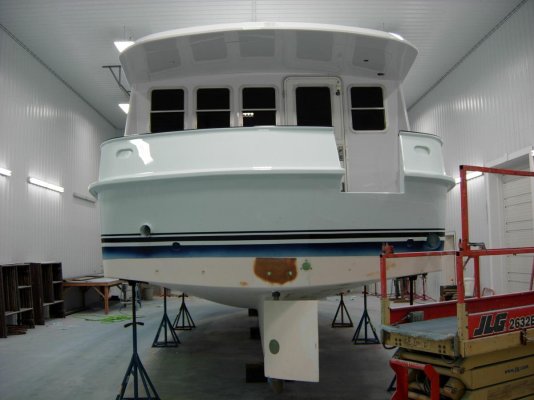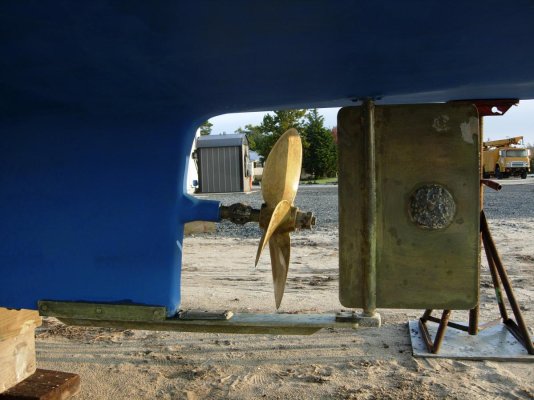My idea is to make 2 TEAK wedges of 1 X 6 inch size the full height of the aft rudder edge and epoxy glue and bolt it thru ss plate rudder to each side. This goes on my 1982 MT34 . Sand and paint to suit. This will avoid high welding costs and be complete DIY except for wood shop costs.








